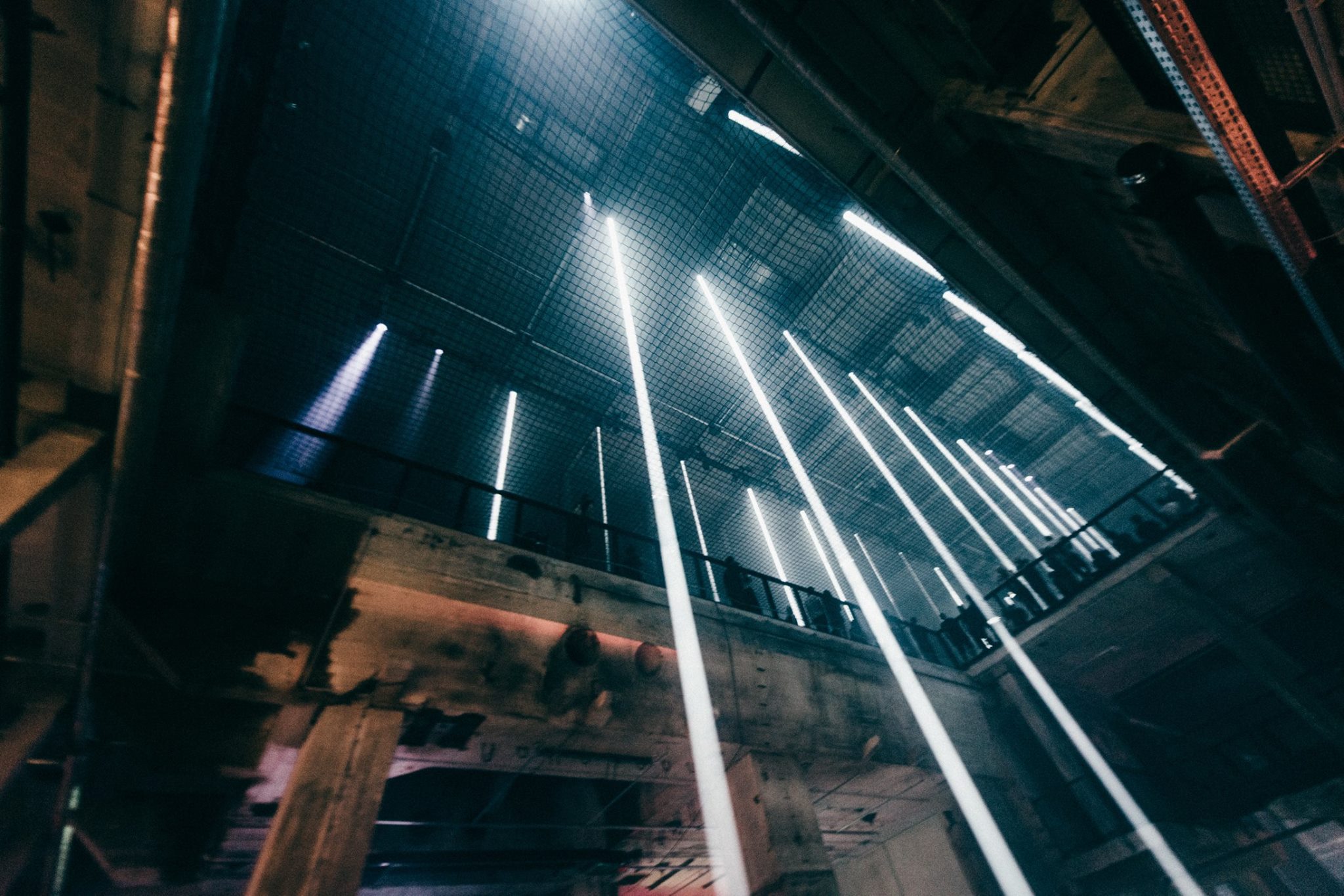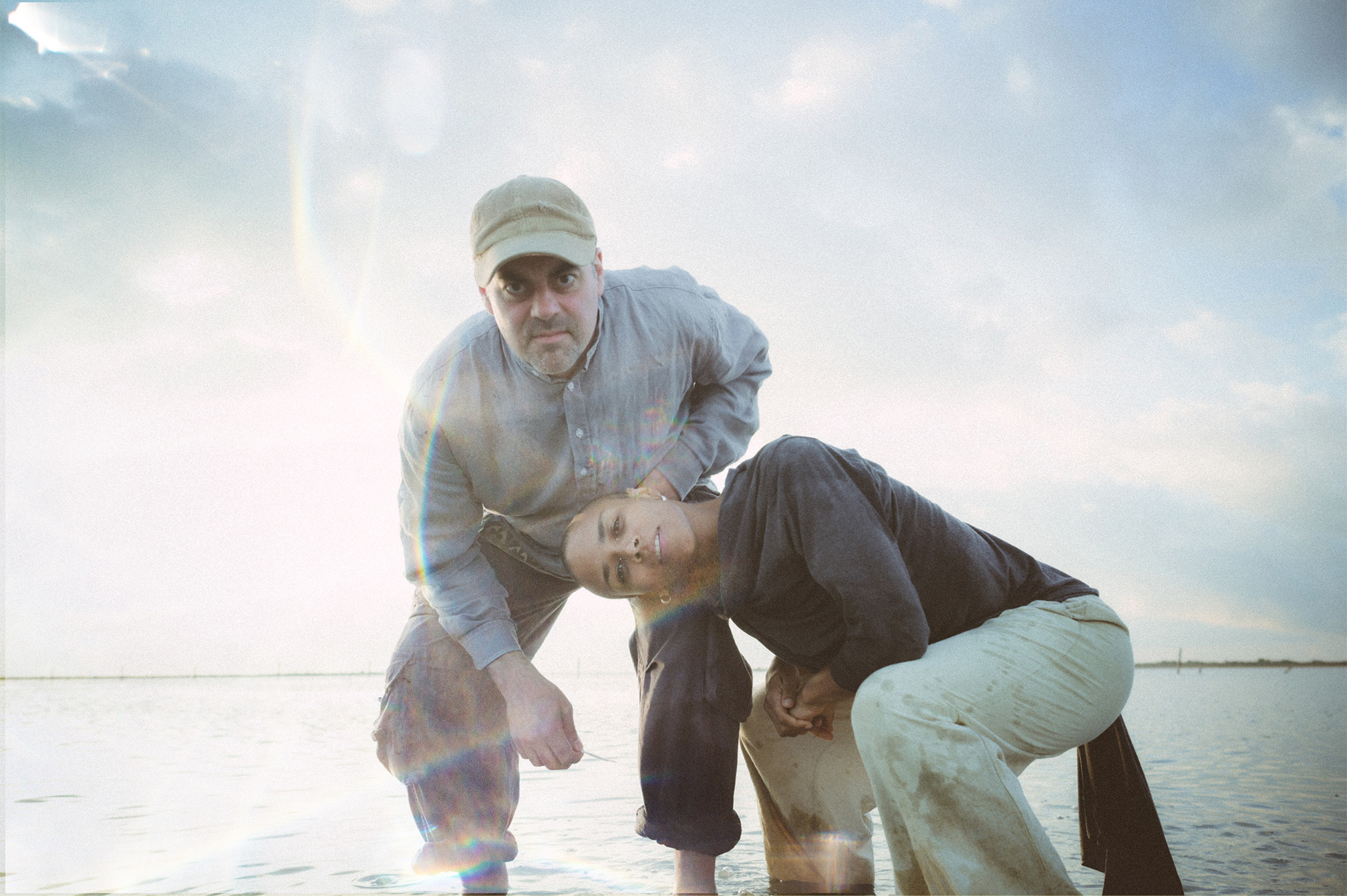Review: Berlin Atonal 2016

As an annual music event held in Berlin, the origins of Atonal festival lie in the 1980s, when it emerged as a countercultural showcase of punk and noise; an act of resistance against the growing commercial scene. It closed in 1990 at the fall of the wall, and the founder went on to open the now iconic Tresor. Resurrected in 2013, by Laurens von Oswald, Harry Glass and Paulo Reachi, the musical and artistic showcase intends to continue this line of sonic and visual protest. A mix of electronic, techno, post-punk, industrial and noise music pair with abstract visual displays in what may perhaps be one of Berlin’s most astounding industrial buildings. The result is five nights of experimental play by both legends in the field and rising artists for a mixed crowd of locals and foreigners.

The lasting pleasures of the festival are in the numbered astounding scenes it presents its attendees. Walking into the Kraftwerk building Wednesday evening to the lower hall. The interior bowels of this old concrete factory building encapsulating you in a Blade-Runner-esque scene.
The flickering of TVs from Marcel Weber, Andrej Boleslavsky and Roly Porters “Acceleration Space” (a site specific installation) were hazed in smoke drifting down from the upper floor, so that the bodies of attendees moving around the hall appeared and disappeared intermittently. From this location you could also hear the sounds of the main stage. It was a unique way to experience the music on offer. Like-wise was winding your way down into the bowels of the building where the work of Rose Kallal looped on 16mm film in an installation that also ran the entire duration of the festival. Or perching in the Projektionsraum, where the immersive panoramic screen enveloped seated guests in playful and often overwhelmingly soothing visuals from video artists like Yuxi.Cao and Luis Sanz. Wherever you chose to end up in the building, there was a unique and thoughtfully created sensory experience to be found.

Audiences were witness to a hefty amount of experimental and industrial electronic music. The opening with the collaborative classical and electronic performance by Peter Zinovieff and Lucy Railton set the stage on the first evening. Zinovieff’s electronic accompaniment to Railton’s astounding manipulation of the cello’s sound capabilities set the tone for much of the music that was to follow, at least in Kraftwerk’s main hall. Artists would test and teeter around the boundaries of sound, rhythm, bass and music, often with truly captivating results. Likewise on Thursday, the closing set by Roly Porter and Marcel Weber (MFO) began with pulsating ambient melodies, progressing slowly into a thunderstorm of electrifying sounds and visuals (known as the Ganzfeld effect). This live A/V set at one point requested the entire hall filled with people closed their eyes and subjected the closed eyelids to music paired with several minutes of orchestrated strobe lighting. The effect on your inner eye was myriads of patterns. I opened my eyes and peaked at the sea of bodies with my eyes closed, and that was a sight in itself.
Though the experimental electronics sometimes felt experimental for the sake of it, Atonal did not fail to draw forward artists with sensational creative talent. One such was Headless Horseman’s performance in the vaults of Tresor on Saturday evening. Shrouded in the mystery of his anonymity and gaining a heap of acclaim over recent years, there was a lot of anticipation to see his live set. It is impossible to deny the musician’s talent. Playing live with drum machines, synths and samplers, his fingers darted over his equipment with a practiced ease. He sent the packed room wild with dark, but danceable techno. The energy for his set could have perhaps been the most electrifying moment of the entire festival.

On Saturday Croatian Amor warmed up the main stage with a welcome down tempo performance entitled “Love Means Taking Action.” Though the hype surrounding Loke Rahbek’s set presumed there would be more of a performative element on the part of the Danish label owner and producer, he remained largely immobile for his set, with three young kids posing, standing and sitting like statues on stage. On screen flashed clips an images of modern markers of love: Rahbek cruising through online chat roulette, alcohol adds, doe-eyed anime characters, Victoria’s Secret models. The set was still well-received. Rahbek transitioned elegantly between ambient, downtempo and electronic, showing a variation of form that stood him apart from the other performers.
Death In Vegas’ “Transmission” performed with Sasha Gray, was by far the highlight of the penultimate night. Grey set a lone figure at the front of the stage, with three web-cams live projecting overlays of her figure on the towering screen behind her. The 2016 album by the same name was itself fantastic, and so the live performance was unsurprisingly a pleasure to watch and listen. With a clean and succinct execution of electronica and techno by Richard Fearless, Grey’s breathless voice stretched sung over the crowd. The collaboration is one that’s produced something extraordinarily eerie and beautiful. It was a powerful set.

The mammoth effort involved in orchestrating such an event must be applauded. Rather than being rammed into field after field of poor sound and half-hearted timetabling, Atonal unfolded with a sleekness I am yet to find at any other music festival. It felt full without being crowded. You could reach any of the acts or installations you wanted without elbowing through a sea of bodies. The pass of the festival was not rushed. You felt like you were floating through an enormous interactive gallery, with the displays changing every few hours. You could catch everything, or simply spend time in one space. Though the air of refinement and formality to the main line-up that prompted the atmosphere in the main hall to be sometimes a little too restrained, the curated nights of afterparties in OHM, Globus and Tresor were the crucial balance to the acts in the Kraftwerk building. People jumped about and sweat through their clothes, letting out the energy that had been built up over the stretch of each evening.
Sonically unique, aesthetically pleasing, and promoting acts some truly visionary acts, Atonal 2016 confirmed the festival as one of the most innovative around.
Photography courtesy of Berlin Atonal.






















